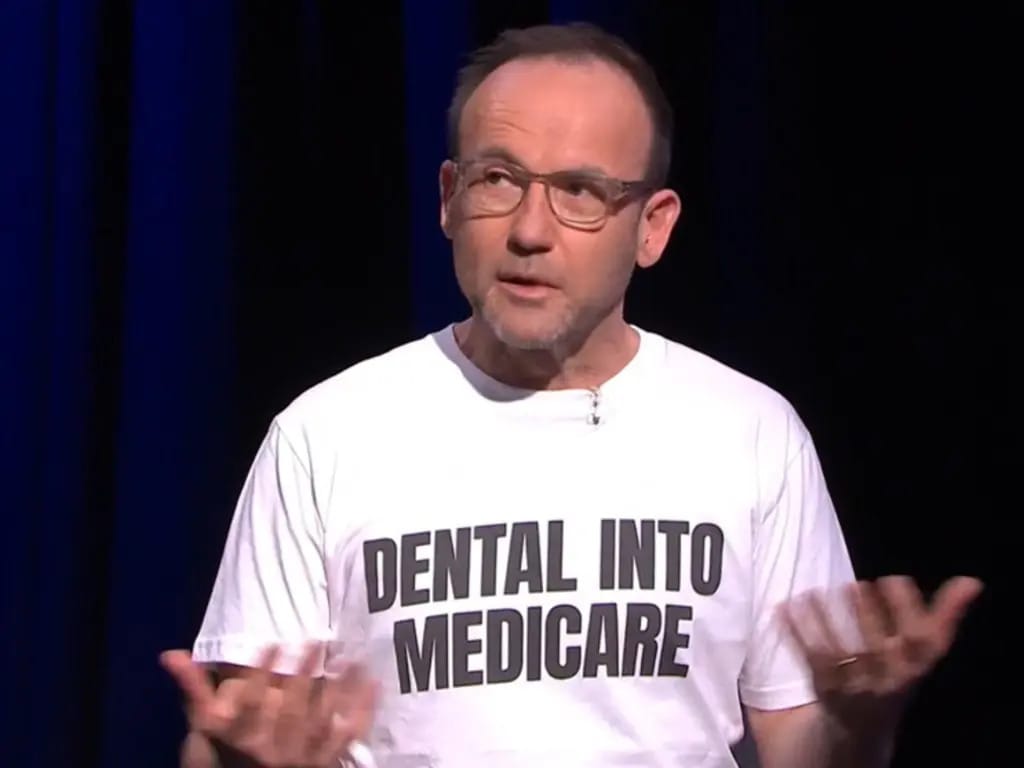The abilityNEWS Daily
The Big Story

Adam Bant appears to have lost his seat (photo courtesy ABC)
The vote for the Greens and the Independents went very different ways at this election.
The Greens have presented themselves as champions of disability, but saw their parliamentary representation crash this election. What does this mean for the sector?
The electoral system is just that - a system. The proof of that is that although the Greens suffered a half percent swing against them and lost three of four lower house MPs, they now control the Senate. The reason for that had nothing to do with their vote - it was because the Liberal vote crashed.
The point is though that it appears to have lost three of its MPs. Why?
Well, Adam Bandt always insisted he would not deal with the coalition. He framed the party as left of Labor. It was a strategy, but it came with a risk.
his made the Greens more attractive to those leaving Labor but essentially told Liberal voters that they weren’t welcome. There was nothing centrist about it; it didn’t offer refuge. Moderates listened, and the Green vote tanked.
The Independents, on the other hand, welcomed coalition refugees. They insisted that policy came first; they’d deal with either party, and their numbers appear to have stayed the same (minus Goldstein, plus Bradfield).
Indeed, the only lower-house Green who might survive looks more like an independent (professional, female, older) than those who lost (young, male).
A compulsory preferential voting system almost guarantees that, normally, the centre will hold. It explains why the Liberals lost so badly, and conversely, why Green representation also collapsed. Anthony Albanese has finally managed to achieve exactly what he’s been doing since the 1980’s - destroying the threat to Labor from the left.
That party, however, has never been more influential in the Senate. Labor is poised to increase its Senate numbers by at least three to 28, meaning it and the Greens, with 11 senators, will control the Senate.
The party can make or break legislation. What’s more important, however, is where it chooses to sit: in the centre or on the left.
The obvious path to relevance is by presenting itself as a co-operative centre party concerned about specific issues, one of which is disability. Choosing this, however, risks losing alienated, angry voters on Labor’s left.
No fighting is more vicious than infighting.
The Briefing

NDIA CEO Rebecca Falkingham
Online NDIA Hub will help people to make decisions
by NDIS
A new online hub has launched by the NDIS to support people with disability by helping them to make their own informed choices and decisions. Offering practical tools, resources and guidance, it can be used by individuals, families and supporters to navigate the scheme.
Economic Justice for People with Disability: A National Blueprint
by Disability Advocacy Network Australia
Australia’s leading disability organisations have released a National Blueprint outlining the urgent economic reforms needed for 4 million disabled Australians. It calls on the incoming government to address inequality in income support, employment and housing systems.
Disabled young people and the cost of living crisis
by Children and Young People with Disability Australia
A video charts the story of Fadhil, a disabled young person struggling as the cost of rent and food rises sharply across the country. A shortage of suitable housing adds further strain, leaving many in unsafe or unsuitable living situations.
Our Partnership with Mob4Mob: A Strong and United Voice
by First Peoples Disability Network
FPDN has partnered with Mob4Mob, Queensland’s first First Nations Disability Organisation, to promote cultural safety and inclusion. This collaboration strengthens representation and shared advocacy in the disability sector for Aboriginal and Torres Strait Islander communities.
Building Strength Together: Tennille Lamb on Transforming the First Nations Disability Sector
by First Peoples Disability Network
Tennille Lamb, a Kanolu and Warrabul woman, leads strategic change in the First Nations disability sector through FPDN. Her work focuses on community-led solutions that strengthen cultural identity while supporting people with disability.
The Wrap
Daily Quiz
What year did the National Disability Insurance Scheme (NDIS) officially launch?
(a) 2011 (b) 2013 (c) 2016
Answer – The NDIS began trial sites in 2013, with full national rollout starting in 2016.

